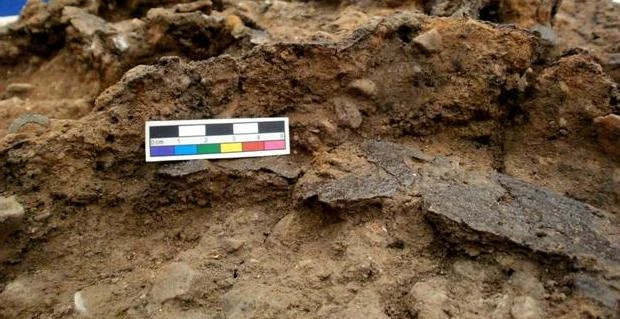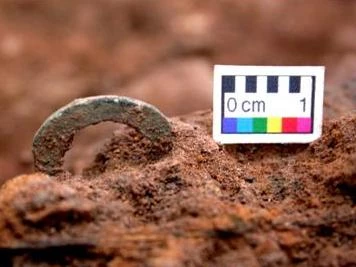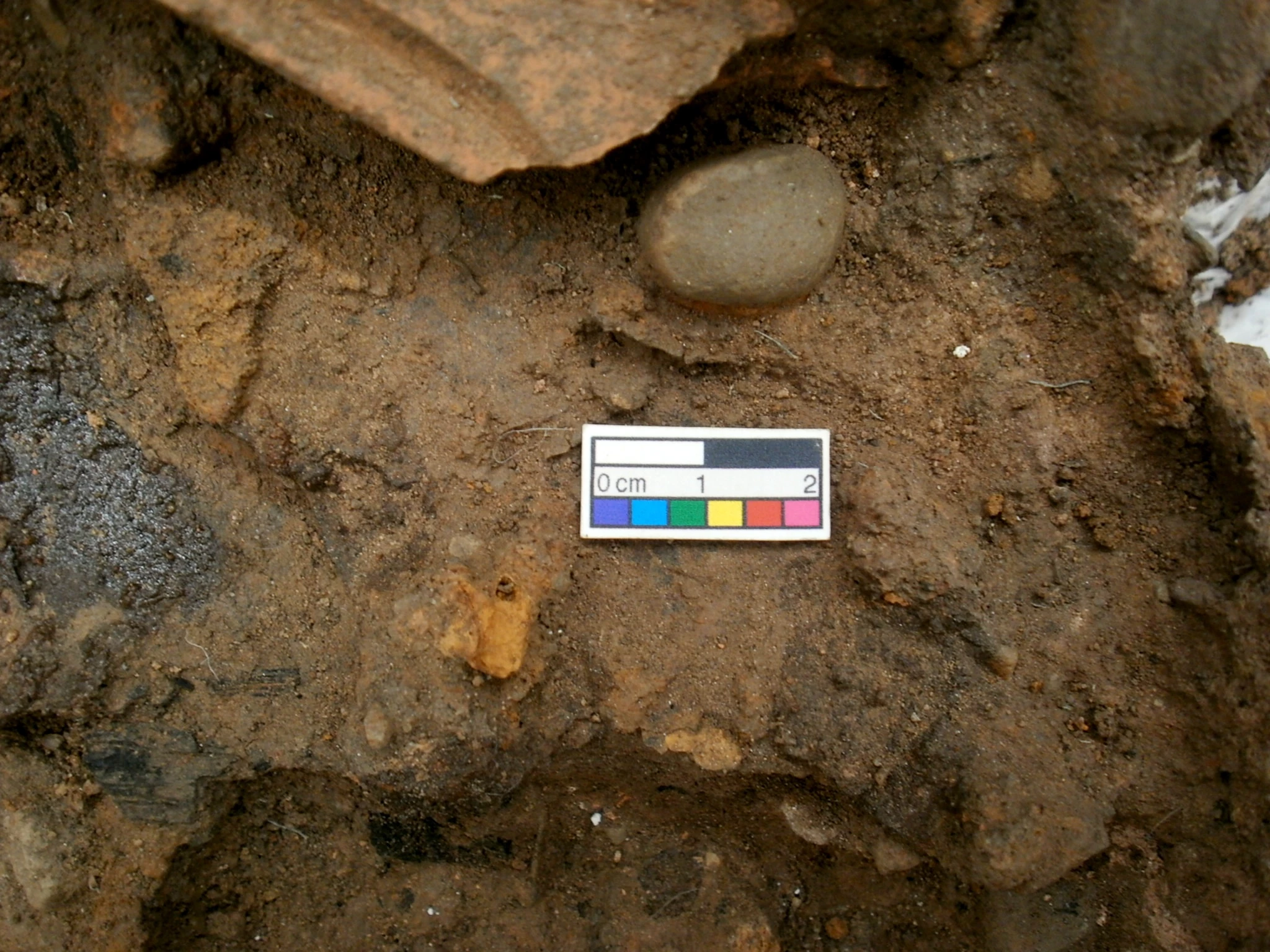Excavating a Girth Hoop
5 October 2011
To the right is an image of the lorica segmentata girth hoop, complete with a copper alloy tie ring, after excavation in the conservation laboratory. The general shape of the hoop, which is lying on its side, can be discerned, and it is obvious that the plate is broken in several places. I had hoped to be able to see how the solid tie ring interacted with the girth hoop, but unfortunately too little of the iron plate remains in a stable enough state to remove enough of the obscuring soil currently supporting it. An x-ray of this area of the block will show the complete shape of the tie ring, and hopefully how it is attached to the plate.
To reiterate, I am excavating the artefacts in this soil block in the same way that archaeologists do in the field, and am coming across the same extraneous stones, silty-soil and common artefacts such as ceramic building material and animal bone contained within the burial deposit that are found on the average archaeological site. As the stones, tile, etc, do underlie so much of the fragile iron plate, I will not remove them at this stage, though I am aware they could be covering more artefacts.
Within the hoop further broken plates can be seen, most notably a flat plate with a rolled edge: this is one of the few plates that can at this early stage be attributed to a specific area of the cuirass; the only plates with rolled edges were the lowest girth hoop above the hip, and the breast and back plates. Given the flat nature of this plate, it is most likely the lowest girth hoop.
To give readers an idea of the depth of the archaeological remains in the soil block, I have included photographs of the back of the girth hoop, as well as a photograph showing the interior. Of interest in the third photograph is part of a plate held to the back of the girth hoop by corrosion and burial products, and how thin the lorica plate with a rolled edge is in the fourth.
Not all artefacts excavated in this area of the soil block can be as easily identified as the plate with the rolled edge; some of the iron has suffered greatly, and only vague shapes in the soil can be distinguished. Removing soil from the surfaces of these mineralized objects has been challenging, as I have to be careful not to take away any burial deposit that might contain corrosion that may be part or all that is left of the archaeological object.
I have not recovered as many fittings, such as buckles, rivets, washers and studs as those found on cuirasses from other Roman sites, and it will be these attachments, and their position on the body armour, that will be very important when trying to work out which plates were breastplates, backplates, shoulderguards, etc. As expected, I have not found many of the valuable copper alloy fittings which could have been removed for re-use during and after the occupation of the fortress by military forces, although I have found possible iron components, harder to spot given the corroded nature of the metal. For example, in the last photograph, the red arrows are pointing towards vague rectangular shapes slightly proud of what is an extremely fragmentary lorica plate; these might be the remains of fittings. Again, only high quality x-radiography will provide us with an image which might allow curators to make an identification of what these deteriorated artefacts are.
The hoop and other items will remain in place until the rest of the block has been excavated, when deconstruction will take place.







Comments - (3)
Also, thanks for the excellent photos.
Thanks Julia - a great, painstaking effort. MORE please : )
As you progress, it will be particularly interesting if you can find the inverted hooks known from the Stillfried girth hoops and there reconstructed (by the RGZM) as being on the top hoop, just beneath the arm area. A location on the lowest or next lowest has been suggested as more likely. Nice if you could prove it one way or t'other.